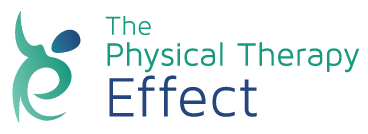What Is Text Neck and How Can You Avoid It?
Jul 11, 2022

Text neck is a stress-related injury to the neck that occurs when you keep your neck bent in a forward position for long periods of time. It’s called text neck because it’s often caused by texting or using phones for an extended period .
What Are the Signs of Text Neck?
Some signs that you may have text neck syndrome include:
- Sharp pain in the shoulders and/or neck
- Nagging pain in the shoulders and/or neck
- Intermittent headaches
- Constant headaches
- Tightness or stiffness in the shoulders and neck
- Decreased range of motion in the shoulders and neck
- Eye pain
- Nerve pain in the upper limbs
- A tingling feeling in the upper limbs
- Numbness in the upper limbs
What Causes Text Neck?

Text neck is caused by bending your neck forward and hunching your shoulders for a long period of time. This is the position people typically assume when texting on a mobile device, which is why the syndrome is called text neck. It’s not unique to texting, however, as it can occur after any extended period in that position for any reason, whether it’s for reading, using a laptop, or something else.
How Can You Prevent Text Neck?

Text neck can be prevented with proper posture. Instead of keeping your phone in your lap and hunching over to look at it, you should hold it up to eye level. Make sure that your back is straight and your shoulders tucked back. It’s also a good idea to shift positions periodically and to take breaks, usually every fifteen minutes, from looking at the device.
For children, they should rest a device on a table or a desk rather than holding it in their hands or placing it on the floor.
How Can Text Neck Be Treated?
If you already have text neck, there are fortunately some exercises you can do to treat it.
Do Scapular Retraction Exercises
This exercise involves sitting upright with a straight back. First, tighten the muscles in your back in between your shoulder blades. Next, pull your shoulders back so your shoulder blades touch. Hold this position for 5 seconds before releasing. Repeat 30 times.
Do Pectoralis Stretches
For this stretch, you’ll need a door frame. Place one hand on the door frame, making sure that it’s level with your shoulder. Then, lean forward so that you can feel a stretch in your chest muscles. Hold that position for up to 30 seconds and then repeat at least 3 times with each arm.
Do Chin Tuck Exercises
First, make sure that you’re sitting up straight with good posture. Then, tuck your chin to create a double chin. This is not the same as looking down. Your nose and chin should not face down at all but should be facing forward. Hold for 5 seconds and then repeat 30 times.
Use a Foam Roller

If you have a foam roller, you can use it to work out knots in all sorts of muscles. You may be able to work out the kinks in your shoulder and neck muscles this way as well. Try rolling the muscles that are sore. Lie on your back and place the foam roller behind you at the spot where your muscles ache. You can place the foam roller either vertically along your spine or horizontally.
Talk to a Physical Therapist
If you’re experiencing neck and shoulder pain, it’s a good idea to consult a physical therapist. They can advise you on how to properly do exercises to help treat your pain and teach you which ones you should do.
Are you dealing with shoulder and neck pain?
Schedule a consultation with our Physical Therapists.
For informational purposes only.











